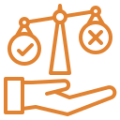Skills and Challenges in Leadership
The most significant challenges in leadership are meeting people where they are, supporting them through their journey, re-building teams to keep the business running, offering exceptional customer service, sparking innovation, and fostering growth – all while building an inclusive environment and striving to be fair, equitable, and inspiring. This is no small task, but for those called to lead, this period offers the opportunity for many to ensure their organizations survive, revive, and thrive.

For those who seize this opportunity, it can be enriching. And their moment has come for those charged with developing the leaders who are so critical to the organization’s success. CEOs believe that leadership is essential. The challenge is to design the leadership programs that produce the business results and then articulate that impact in ways that prove leadership development programs deliver what organizations need.
Moving forward, CEOs think there are many critical skills needed for effective leadership, including
- Practical communication skills to articulate the mission and purpose of the organization.
- Collaboration skills to drive productivity and innovation.
- Empathy to build trust and create a high-performing team.
- Inclusive leadership skills foster a sense of belonging to retain talent and promote the required corporate culture for the future.
- Coaching and people-development skills to develop remote and on-site employees and increase the pace of skill-building for overall organizational capabilities.
- Team-building skills to create resilient and agile teams.
- Strong interpersonal skills to improve the quality of internal relationships.
The Role of the Leader Has Evolved
Against the backdrop of a global pandemic, civil unrest, an economic crisis, global supply chain disruptions, and increasing geopolitical tensions, we began to realize the fissures in our healthcare, the fragility of food and housing security levels, the impact of wage inequity, as well as the lack of mental health support for those who needed it most.

Ready or not, leaders were called upon to address the concerns of workers who faced these challenges while trying to deliver business performance. And these leaders learned how to lead in-person, virtual, or hybrid teams in a crisis as quickly as possible. To be effective in this new environment and leadership challenge, team leaders need many of the time-tested leadership skills we’ve depended upon for years, and new and different skills are now required to maintain worker engagement and productivity in various settings, make decisions quickly, and communicate effectively.
For years, first-time and front-line supervisors received initial training in the “fundamentals” of managing others, hiring guidelines, and performance management. That was followed by years in a desert of development with a few instances of an “oasis” (usually around compliance issues), and then, if by some miracle, they made it to the higher ranks of the organization, they were tapped for senior leader training. Now, high potential leaders are regularly identified and developed; organizations are casting a broader net to tap underserved populations; there is continual development for leaders at all levels, and an emphasis is placed on keeping women and people of color in the leadership ranks.
Leadership Development Programs
Many formal leadership development programs shifted years ago to a shorter duration, alignment with agreed-upon leadership competencies, 360-degree feedback, more pre/post assessment data analysis, coaching, cohort/action learning projects, and a commitment to involving the manager and other stakeholders. Experiential programs with real-world leadership challenges to be solved, especially among in-tact teams, have proven to be a practical approach. The shift to personalized development is a trend that continues to build momentum, as is the use of virtual coaches, group coaching, and team development. More and more programs tie the effectiveness of the intervention, either on an individual or group level, to business unit or organizational performance. And considering the cost associated with installing one of a plethora of online or virtual reality platforms to support coaching and mental health, investments will need to be evaluated for impact and cost efficiency.
What is covered in leadership development in its broadest sense has evolved as well, with more of an emphasis on understanding strategy and how to cascade and implement the strategy, scenario planning and developing agile and resilient teams, coaching and developing people, being a culture champion, and becoming an inclusive and inspiring leader. Team development is here to stay, particularly at the senior levels, where mutually dependent leaders must align among themselves and between teams for shared business outcomes. The trend toward the specialization of programs designed for key executives and their next career move will continue, often in partnership with academic institutions.
Embrace the Evolving Roles and Challenges in Leadership
In the face of global upheavals and transformative challenges, leaders have had to rise to the occasion and lead with resilience, adaptability, and empathy. The role of leaders has evolved to encompass a diverse set of skills, including communication, collaboration, and inclusive leadership, which are crucial for organizational success. With a growing emphasis on leadership development at all levels and the shift towards personalized and experiential programs, organizations invest in nurturing their leaders for the long haul. As we move forward, demonstrating the value of leadership development programs becomes essential, showing that investing in developing strong, capable leaders is not just a cost but a strategic move that ensures the sustainability and resilience of the organization’s leadership pipeline. By fostering exceptional leaders, organizations can confidently navigate the challenges of the future and build a brighter, more inclusive, and prosperous tomorrow.




























